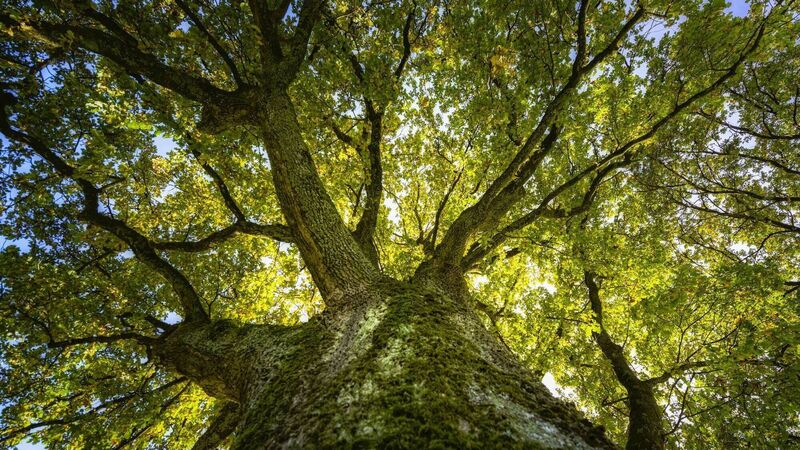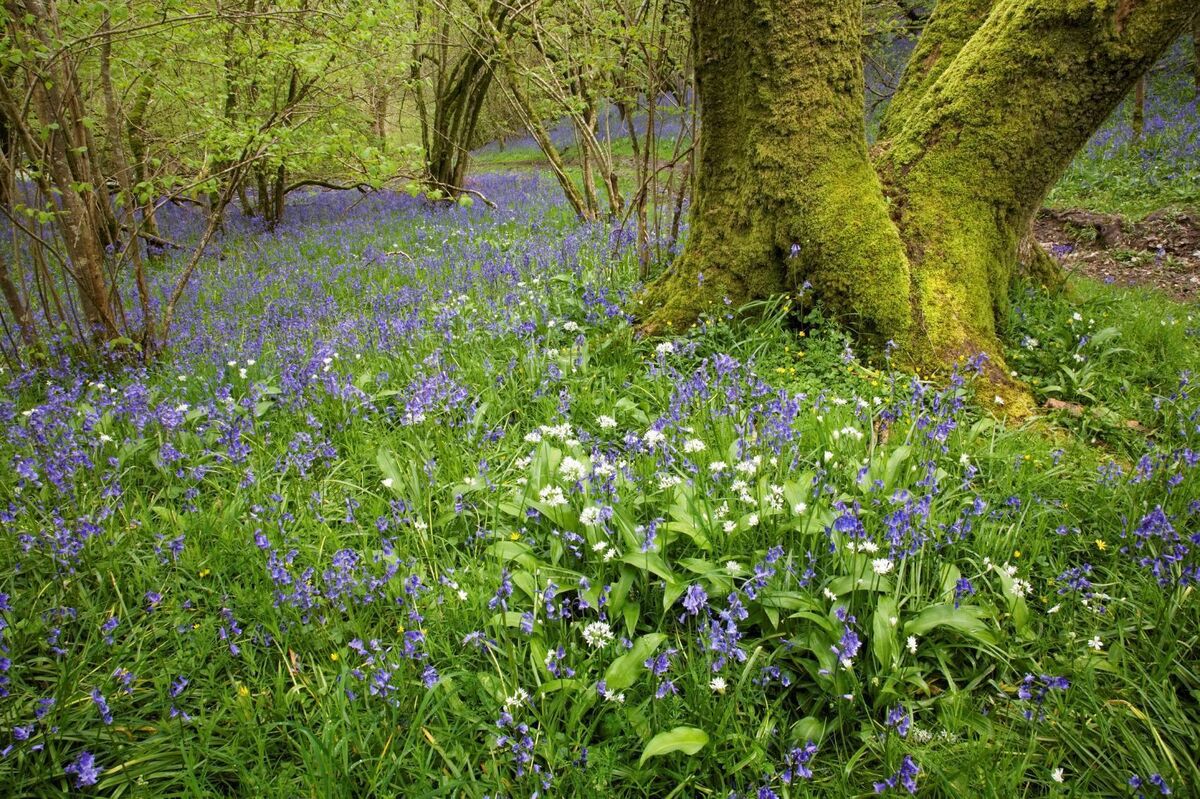Anja Murray: I spent an entire day in one of Ireland's ancient oak woodlands

Anja Murray: "We cannot continue to abandon Ireland’s remaining old oak woodlands — their value is so much more than any of us can even put to words or evaluate in monetary terms."
By early summer, tree leaves are filling out, casting lively shade across the interior of deciduous woods. Layer upon layer of green chlorophyll, filling up 3D space in an arrangement that maximises the efficiency of their age-old, light-eating, carbon-crunching, technology. Each tree species has developed its own characteristic arrangement of leaves, twigs, branches and boughs, each lineage of DNA coding the optimal positioning of leaves to harvest as much sunlight as possible. Oak, ash, and willow allow plenty of light through their emerging leaf canopy to sustain an understorey of smaller tree and shrub species — such as holly, hawthorn, blackthorn and hazel — and ample plant life on the woodland floor too.
I recently had the pleasure of spending an entire day in an ancient oak woodland. To get there, we had to follow a forestry track through Sitka spruce plantations for an hour or so. Beneath the evergreen spruce needles, packed tightly together in rows, almost no light penetrates to the forest floor. Scant mosses and occasional sprigs of bramble and fern manage to get a foothold, only getting established where canopy gaps have opened up from windthrown trees. Pine needles litter the ground in a thick layer that is acidic enough to prevent them from breaking down readily. The cohort of critters that normally chomp through leaf litter aren’t accustomed to these North American needles — a mismatch that is so often the case with alien species from afar. The dense shade also prevents much of a ground flora or an understorey... just one of the ways in which these spruce plantations offer little of value to biodiversity.
These are industrially-managed tree plantations, lacking the functional dynamics that operate in a woodland ecosystem, without the flux and flow of energy circulating through the trophic levels of the food web.
Leaving the still, dark, lifeless spruce plantation was a relief. The adjacent old oak woods were bathed in light, shimmering and bouncing off every surface. We were greeted with a rich soundtrack of birdsong and pockets of primroses everywhere we looked. The diversity of shape and form in the old oak woods especially welcome.
An enormous oak tree lay along the ground, having likely come down in a storm a few years ago. Though fallen over, this oak was still very much alive, now growing new boughs, readjusting to its new horizontal situation. Its thick branches were upholstered in soft green moss, perfect for climbing along and resting on.

Here and there, saplings of holly and birch had seeded themselves into nooks between the boughs, safe from the prying mouths of deer. Wild dog-violets were out in force, vivid purple flowers giving the woodland floor a blue-rinse hue. On this day, we saw few bees or butterflies, though I have to assume they were simply flying up high among the tree tops where we were just not seeing them.
Caterpillars, an array of beetles and tiny flies all feed on new spring leaves, high up in the canopy, only descending to the ground level at the end of the season. An array of shield bugs live among the leafy canopy, each species colourfully camouflaged according to the tree species on which it is adapted to live. By sucking the sap from leaves and in turn getting eaten by birds, both eggs, nymphs and adult bugs are among the many that are crucial in the woodland web of life. Bumblebees, cuckoo bees, and mining bees are among those that occupy the lower layers, each species nesting, burrowing, and laying their eggs according to time honed strategies.
Caterpillars, too, are abundant in broadleaved woods right now, the majority going as bird food, despite their best efforts at camouflage. Silver-washed fritillary is a butterfly that likes to linger on bramble leaves in openings and edges of deciduous woods such as this. Their beautiful, looping courtship flight in spring has by now culminated in the laying of eggs on tree trunks above sunlit patches of dog violet, this butterfly's preferred larval food plant. The purple hairstreak butterfly is exclusive to oak woods, each phase of their life cycle being intimately entangled with bud burst and the emergence of oak leaves. Despite their vivid purple wings, these butterflies are rarely seen by us, as they, too, spend most of their life in the canopy of oak trees.
Birds, feeding little hatchlings through the month of May, are totally dependent on this rich invertebrate life. Tree creepers wind their way around tree trunks, cryptic colouration helping them blend in. They pick off insects from the crevice of bark, especially the fissured bark of old oak trees. Blackbirds and robins, being ground feeders, are much more obvious to our eyes. Goldcrest and coal tits tend to spend their days high among the upper canopy layers and so are heard rather then seen. In wetter areas, with muddy ground and a good cover of understory shrubs and bramble, woodcock sit tight, active mainly at night. Evidence of long-eared owls and sparrowhawks are the pellets below roosting sites and the scattered downy feathers where a small bird has been caught and consumed by these mighty woodland predators.
🌿Ireland ☘️ was once covered in forest. About 80 - 85% of the island, in fact, was forest 🌳💚
— Ireland's Trees & Mythology (@Tree_Folklore) August 11, 2024
This Oak 🌳 exists in a tiny remnant of those ancient woodlands in the Derryveagh Mountains in County Donegal
Ireland's history is reflected in its place names.
Derryveagh or Cnoic… https://t.co/p8OtKjFMjw pic.twitter.com/3GA18q8mbY
Oak woods such as these are few and far between, with literally only a handful of sites remaining around Ireland. Also known as oceanic rainforests, these are the climax vegetation of most of Ireland. As climate change and biodiversity loss both gather pace, we need woods like these more than we can know.
Yet it is shameful to this country that not only do we have by far the lowest cover of native woodlands in all of Europe, but also that the surviving old woods are overgrazed and riddled with invasive species.
To protect them from the damage caused by deer, a great deal more culling of deer is required. The task of controlling invasive species such as sycamore, rhododendron, and laurel requires ongoing attention and investment. Allowing for the expansion of the extent of the woods will enhance their resilience in to the uncertainties of the future. From Donegal to west Cork, and right across the country, we cannot continue to abandon Ireland’s remaining old oak woodlands — their value is so much more than any of us can even put to words or evaluate in monetary terms.





